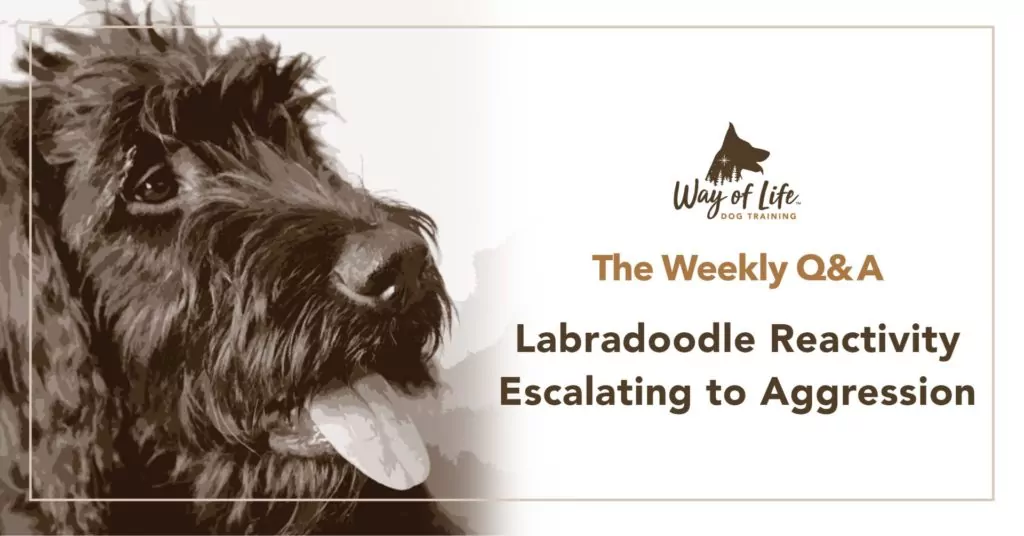
Q: We have a 6-year-old labradoodle who became reactive on leash during the pandemic. More recently, his behaviour on leash has become unpredictable and aggressive. We are seeking the right training program for both us and our dog to help resolve these behaviours as well as the skill set to de-escalate the situation when he is triggered.
A: Thank you very much for reaching out to us about your labradoodle. Many, many people struggle walking their dogs. I am sure you encounter other dogs lunging, pulling, barking, and snarling at other dogs. It is a common challenge but that doesn’t make it any easier.
One reason we continue to struggle is that we continue to misunderstand where this behaviour comes from. When I am getting started with a new client, we hold an in-depth conversation about behavioural issues and the differences between the mainstream way of seeing things versus the Way of Life method. In the mainstream culture, we put much of the blame on the dog – its breed, background, a traumatic event in its past, poor parenting by its mother etc. We overlook the dog’s present circumstance, or what we call way of life, as root cause of their behaviour. And yet all beings – human or animal – behave according to the situation they’re in. So instead of thinking that a dog has triggers and working on de-escalating these triggers, we work on raising a sound dog that does not get triggered easily. This is a fundamental difference between the Way of Life method and how trainers focused on behaviour do things.
Another critical aspect I would talk to you about is whether your dog enjoys opportunities to express his natural tendencies and any breed-related motivations. I find labradoodles, goldendoodles, cockapoos, and other designer breeds to be underestimated. It is not because we have a designer breed that the dog isn’t a representation of the breeds in his lineage – a Labrador and a poodle in your case, both with intelligence and working capacity. Therefore, consider ways of challenging the dog with physical exercise and mental exercises using food, toys, and games.
The third thing I address with any new client in your situation is the degree of structure in the home life. Again, this isn’t an aspect that’s discussed enough is that dogs’ behavior outside the home reflects how things are being done inside the home. A dog who is not regulated indoors will not take well to being regulated outdoors. Simple yet powerful measures in the form of scheduling, crating, and providing opportunities for alone time go a long way in regulating dogs indoors and therefore developing their capacity to take on the world.